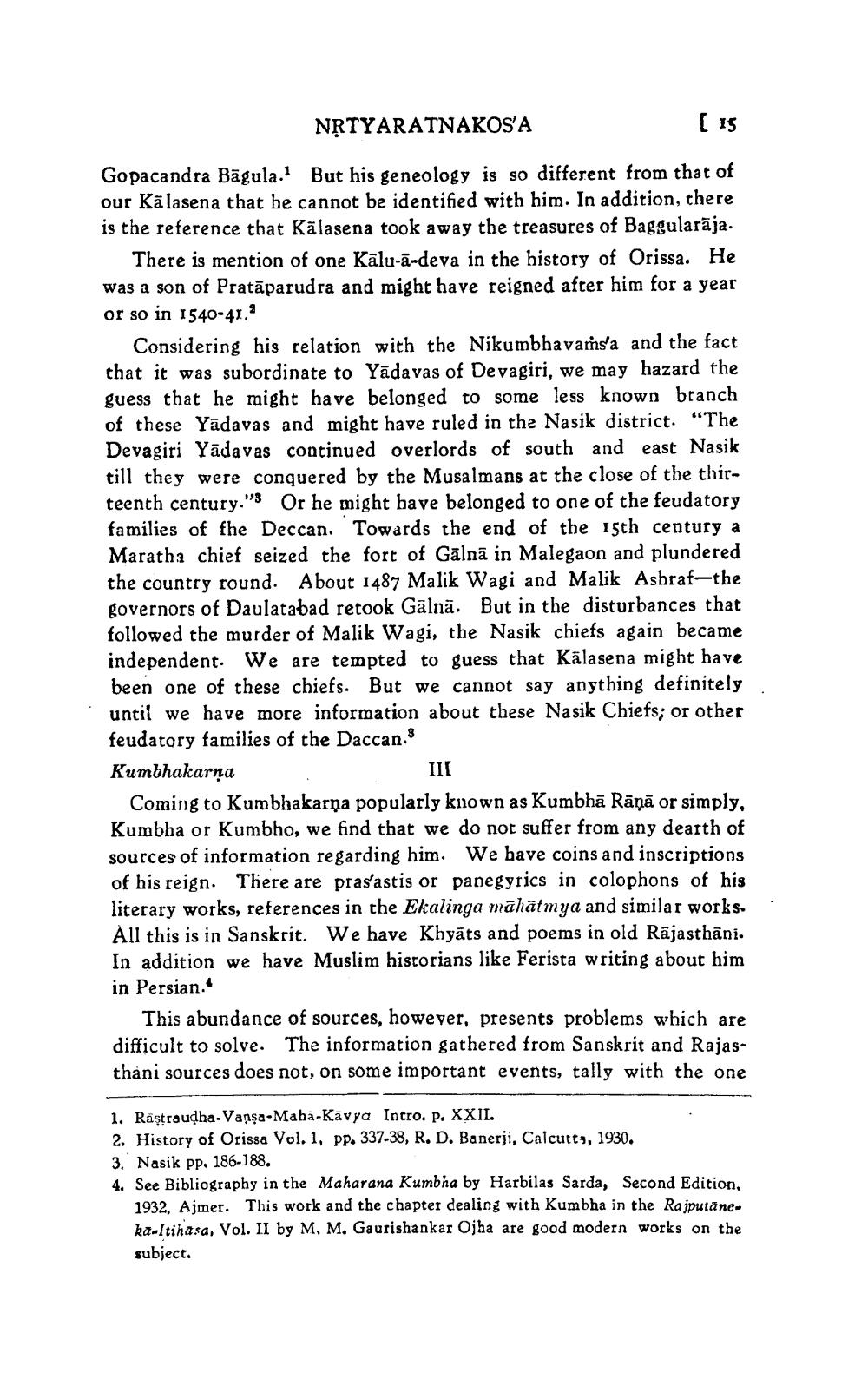________________
NRTYARATNAKOSA
( 15
Gopacandra Bāgula. But his geneology is so different from that of our Kalasena that he cannot be identified with him. In addition, there is the reference that Kālasena took away the treasures of Baggularāja.
There is mention of one Kālu-ā-deva in the history of Orissa. He was a son of Pratäparudra and might have reigned after him for a year or so in 1540-41."
Considering his relation with the Nikumbhavamsa and the fact that it was subordinate to Yādavas of De vagiri, we may hazard the guess that he might have belonged to some less known branch of these Yādavas and might have ruled in the Nasik district. "The Devagiri Yādavas continued overlords of south and east Nasik till they were conquered by the Musalmans at the close of the thirteenth century." Or he might have belonged to one of the feudatory families of fhe Deccan. Towards the end of the 15th century a Maratha chief seized the fort of Gālnā in Malegaon and plundered the country round. About 1487 Malik Wagi and Malik Ashraf-the governors of Daulatabad retook Gālnā. But in the disturbances that followed the murder of Malik Wagi, the Nasik chiefs again became independent. We are tempted to guess that Kālasena might have been one of these chiefs. But we cannot say anything definitely until we have more information about these Nasik Chiefs; or other feudatory families of the Daccan. Kumbhakarņa
INC Coming to Kumbhakarna popularly known as Kumbhā Rāņā or simply, Kumbha or Kumbho, we find that we do not suffer from any dearth of sources of information regarding him. We have coins and inscriptions of his reign. There are pras'astis or panegyrics in colophons of his literary works, references in the Ekalinga māhātmya and similar works. All this is in Sanskrit. We have Khyāts and poems in old Rājasthāni. In addition we have Muslim historians like Ferista writing about him in Persian.
This abundance of sources, however, presents problems which are difficult to solve. The information gathered from Sanskrit and Rajasthani sources does not, on some important events, tally with the one
1. Rastraudha-Vanşa-Maha-Kavya Intro. p. XXII. 2. History of Orissa Vol. 1, pp. 337-38, R. D. Banerji, Calcutty, 1930. 3. Nasik pp. 186-188. 4. See Bibliography in the Maharana Kumbha by Harbilas Sarda, Second Edition,
1932, Ajmer. This work and the chapter dealing with Kumbha in the Rajputaneka-Itihasa, Vol. II by M, M. Gaurishankar Ojha are good modern works on the subject.




